- Author Antonio Harrison [email protected].
- Public 2023-12-16 07:44.
- Last modified 2025-01-22 21:44.
Stained glass is one of the most sophisticated art forms. It is distinguished by its rich history and the presence of a considerable number of interesting manufacturing techniques. The very word "stained glass" is translated from Latin as "glass". The improvement of beautiful works begins with the root causes of the art of their creation.
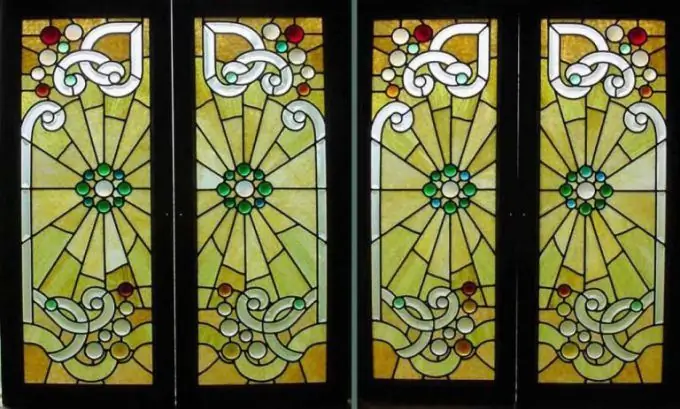
Since the formation of the first civilizations, man began to use glass. Time passed, and people figured out how to make the new material colored. The people of Syria have learned how to blow glass. From this moment, the development of the stained-glass window begins.
World art
The exact date of their appearance is unknown. But there is information that for the first time colored glass was used for simple pictures. The pieces were fixed on the board with putty. The first temples were decorated with such panels. Art won recognition and spread throughout the world.
There are the following types of stained glass:
- Romanesque;
- gothic:
- renaissance.
Romanesque
The Romanesque type (Romanesque glass), which emerged in the eleventh century, remained the most relevant for a whole century. It turned into a classic one. The picture was laid out in colored pieces and fastened with metal profiles.
The cost of such a decoration was very high, the manufacture was notable for its laboriousness and complexity. Individual masters made high quality paintings from thin sheets prepared in advance. More than a hundred pieces of glass were taken on one panel.
Each had its own color and shape. Despite the high cost of defects, glass paintings had a lot. Air bubbles remained in them, there were irregularities, scuffs. But at present, these shortcomings only add charm to the classics.
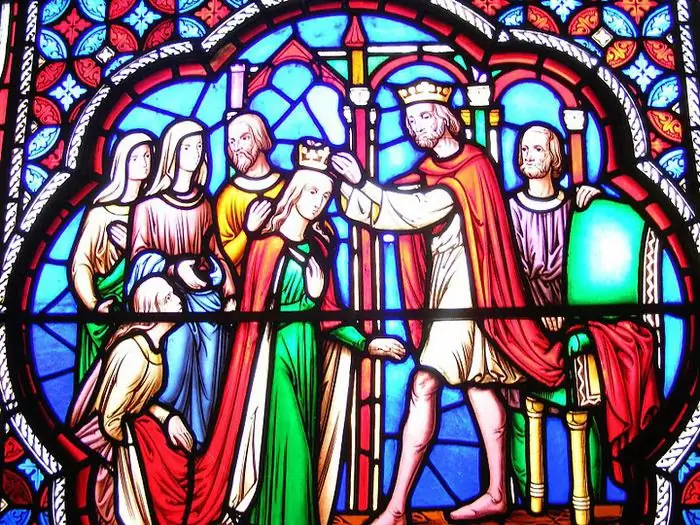
The master sketched the drawing on a wooden surface. Then, suitable pieces of glass were selected for each element. The fragments were painted with natural dyes and burned in an oven to fix the pattern.
With the help of narrow lead bindings, the image was assembled into a single drawing. For huge windows, the composition was composed of several smaller panels to increase strength and stability.
The most striking examples of masterpieces are recognized as triple stained glass windows of the Holy Trinity from Chartres Cathedral, "Ascension of Christ" and a composition of four Old Testament prophets in the Cathedral of Augsburg, "Crucifixion and Resurrection" on the windows of the temple in Poitiers.
Gothic
Similar panels have been made since 1144. During the construction of the monastery in Saint-Denis, its windows were filled with several medallions. Each of them revealed one of the key historical moments.
For the Gothic style, the number of cathedral windows began to increase. The new architecture quickly gained popularity. The temples combined gloom and light at the same time, personifying spirituality.
Over time, the color saturation changed to lighter shades, which ensured the penetration of more rays. The type of windows has changed. They began to be made according to the scheme of the Latin cross. A new technique has appeared, grisaille.
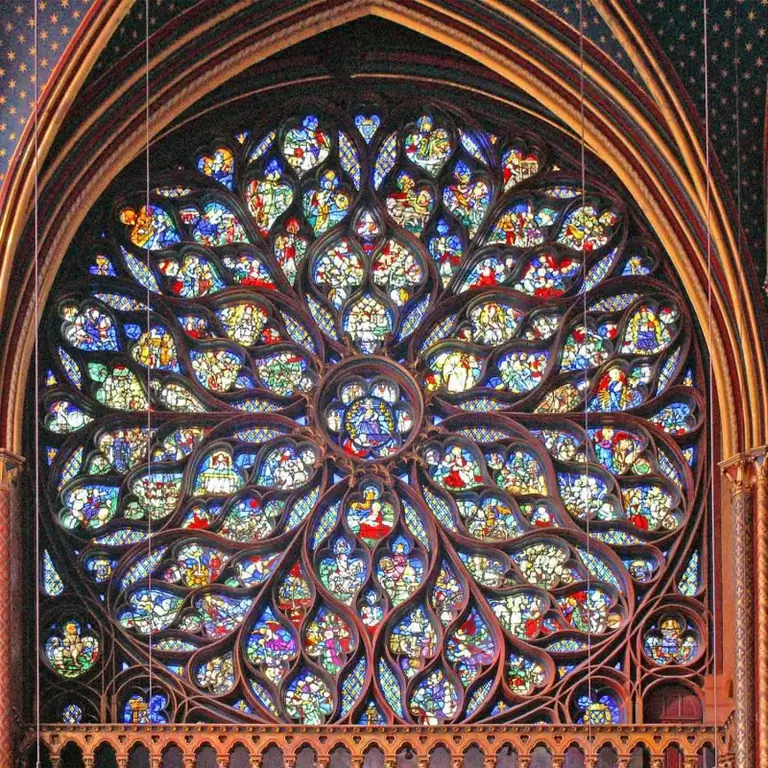
French technology was to place radiant images in dark and large rooms that became brighter. The most famous masterpieces of that time are considered to be medieval stained glass windows in the Church of Chartres.
They perfectly demonstrate the harmony of the majesty of the huge windows, the gloom of the architecture and the concept of the building. The darkness, together with the stream of light pouring into the room, gives a stunning effect. This is the peculiarity of the Gothic.
Renaissance
By the fifteenth century, the secular lifestyle had come to the fore. This change was strongly reflected in stained glass art. There are many effective techniques for working with glass, silver etching. The level of finished paintings has increased.
The colors of the master were applied directly to the material, which ensured the unusual shades. The images have acquired brightness and dimension. Became popular small, a maximum of thirty centimeters, medallions, which have become symbols of the era.
Examples of old Renaissance works are the windows of the Florentine Cathedral, the Besserer Chapel in Ulm Minster. Until the sixteenth century, the manufacturing technique followed the classical scheme. Raphael, Michelangelo and Leonardo da Vinci had a great influence on art.
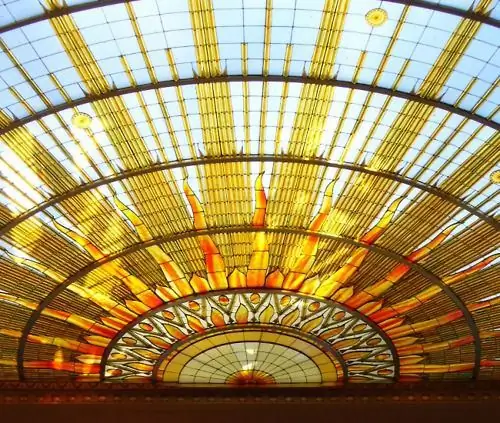
In the era, realism, the European style of decor and the bulkiness of forms were combined. Thanks to a new processing technique, the clarity of the glass has increased. A red stain appeared.
The masters used color solutions without distorting the shapes of the paintings. The windows have reached gigantic proportions. Examples of masterpieces of the High Renaissance are church stained-glass windows in Brussels, "The Tree of Jesse" in Beauvais.
The sixteenth century is called the final stage of the flowering of art. The methods of making and drawing up drawings began to develop rapidly. The twentieth century has had a significant impact on design methods.
Russian stained glass
In Russia, there were no Western panels until the nineteenth century. Domestic culture did not need such innovations. But after its appearance in the country, the stained glass window quickly gained recognition.
For the first time, a new form of art became known in the seventeenth century. This was followed by a century of idleness. The use of masterpieces in Russian culture began from the century before last. Since the middle of the century, paintings have been used to decorate buildings.
Russian masterpieces are called the beautiful stained-glass windows of the Tsarskoye Selo chapel, "The Ascension of Christ" in St. Isaac's Cathedral, a panel of the building of the Russian Geographical Society in St. Petersburg.
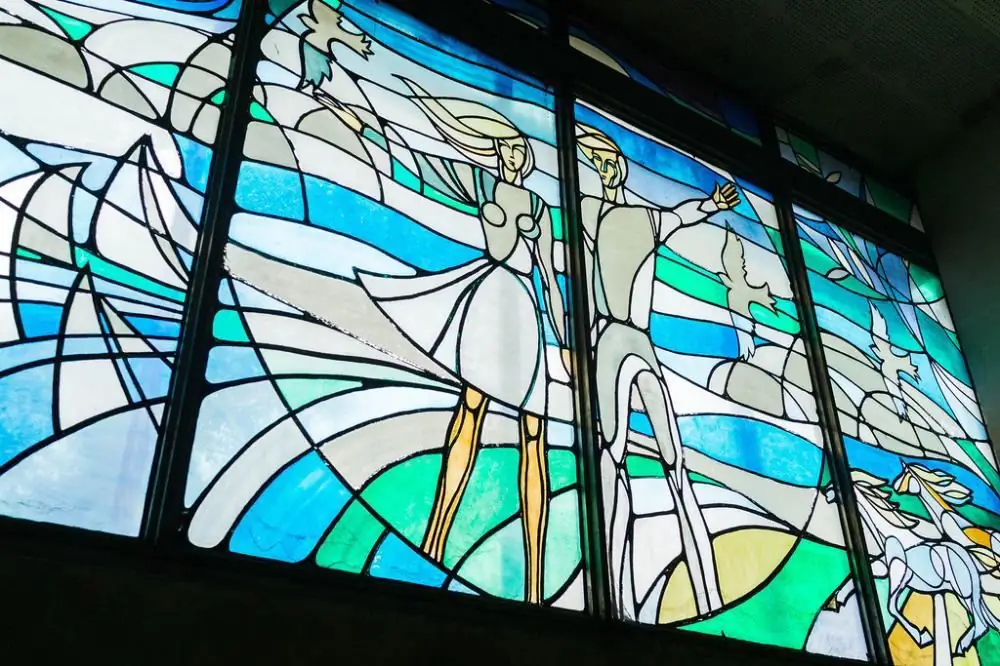
Due to the decline in interest in Art Nouveau, stained glass painting began to be forgotten with the advent of the new century. The revival began in the middle of the last century. New works were distinguished by originality.
Modern stained glass windows give the room a special luxury. Multiple manufacturing techniques, the development of design have become key points for the improvement of the art form.
Along with the classic ones, modern technologies and processing are used. Popular techniques:
- sandblasting;
- mosaic;
- typesetting;
- fusing and baking;
- jellied;
- etched;
- soldering;
- faceted;
- combined;
- tiffany.
Types of modern processing
Sandblasted stained-glass windows are samples made in the technique of the same name and connected by a common theme. Usually the composition is made in a single color on a solid surface.
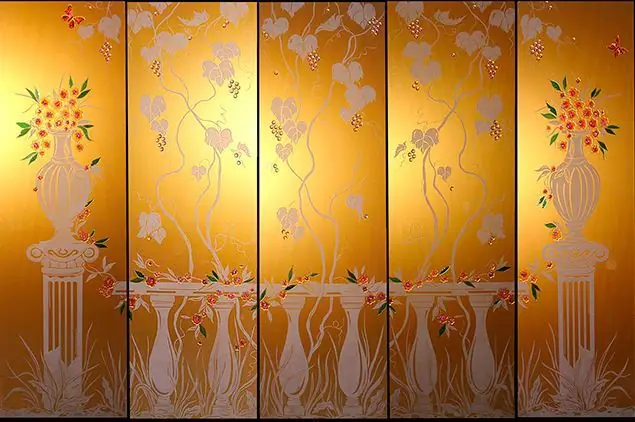
One-dimensional pieces of a mosaic panel are similar to a mosaic. Such an image serves as a background or the main picture.
Typesetting compositions form separate fragments of glass of the desired shapes and shades without additions. When using fusing, the pieces of glass are sintered with each other in the intended position. This technique also includes the baking of foreign elements into the finished drawing.
Filled stained-glass window is formed from pieces with the applied contour of the picture. Each element is filled with varnish or paints. To create an etched image, a set of glasses made using the etching technique is used.
The soldering pattern is formed by colored glasses, fixed with a lead frame and sealed at the joints. This technique has been known since the Middle Ages.
Facet patterns are made of glasses with a previously removed facet. Let's assume the option of using polished or sanded pieces.
Combinations of several types are called combined. The technique gives amazing results, allowing you to create real masterpieces.
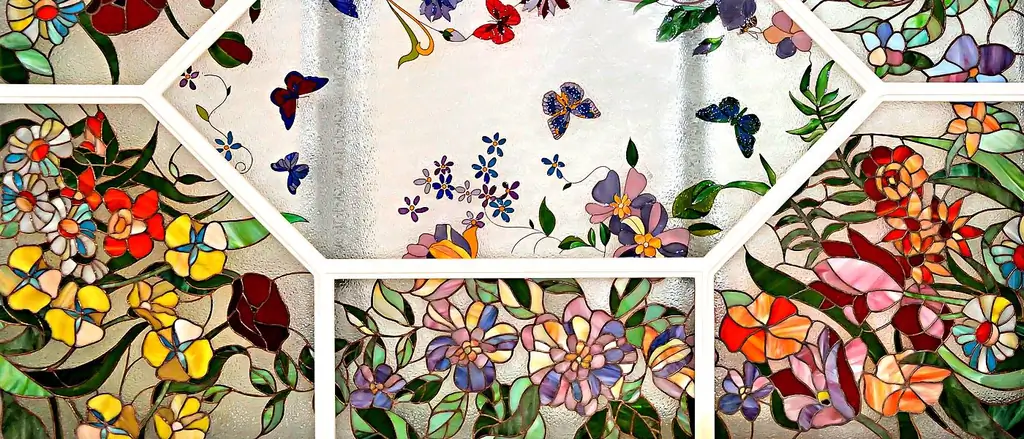
Tiffany technique
A special place is occupied by the work of Tiffany Lewis. He developed the author's style and technology. Tiffany stained glass is distinguished by its special color.
The master always gave preference to brightness. He sought to maximize the saturation and unusualness of the color range.
The next feature is quality material. The glass was always checked very critically. Even the smallest defects did not fall.
The same texture of the pieces was required. The works were distinguished by the highest realism and complexity. Often, Tiffany's masterpieces were compared to real painting.
All glasses were connected to each other by a wide copper ribbon. Along the edge it was bent at a right angle. Finished parts were connected with tin and patinated on top of it.
Works are in private collections, you can see them in cathedrals in England, America, museums.
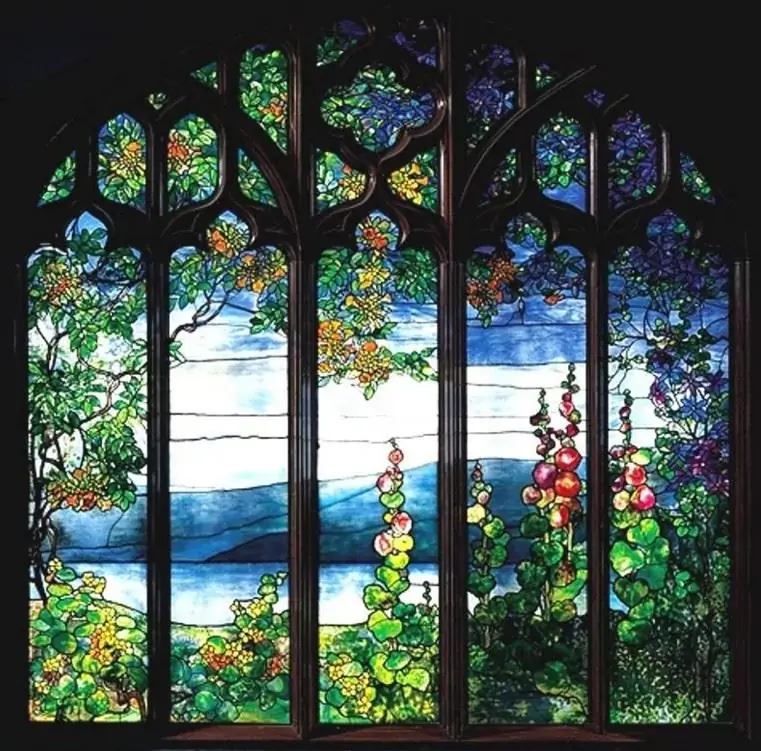
To this day, the Tiffany technique remains one of the best, and the master's works themselves are recognized as masterpieces of art.






